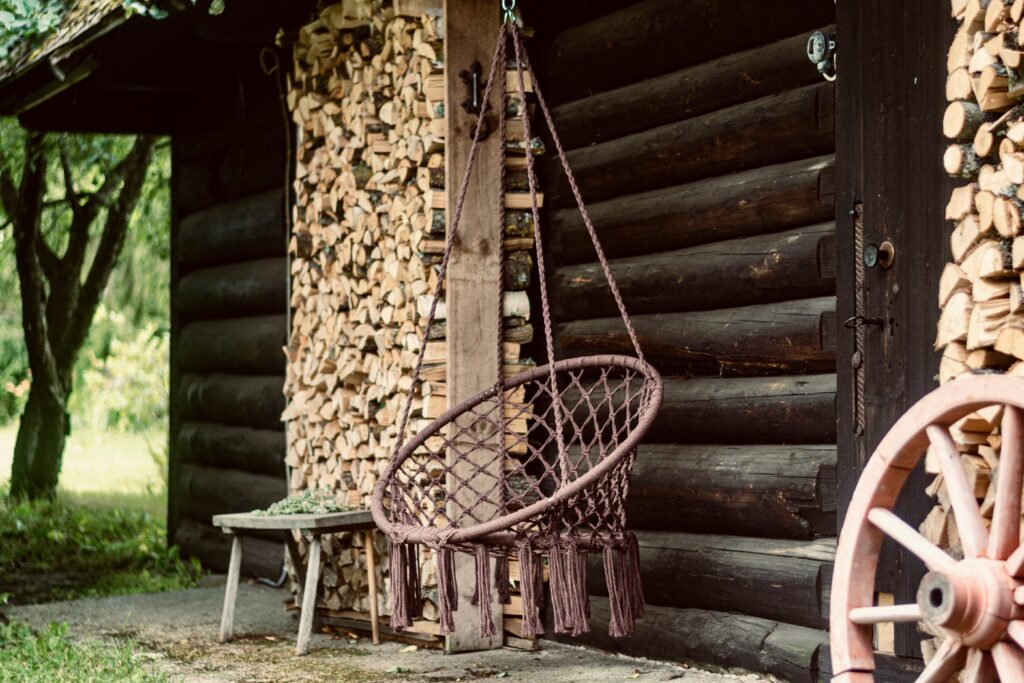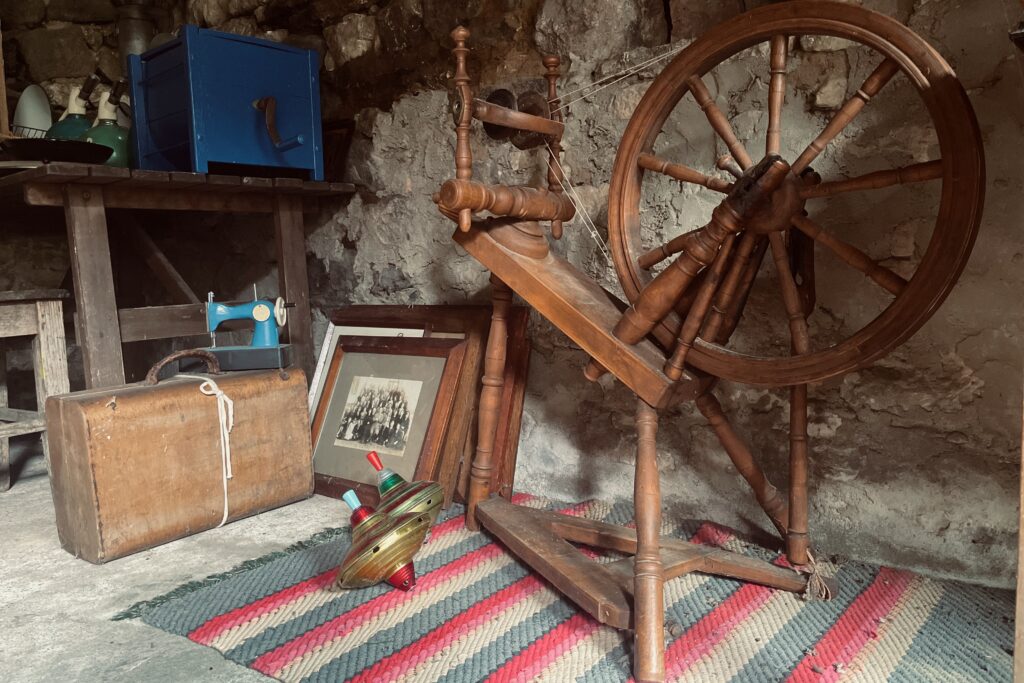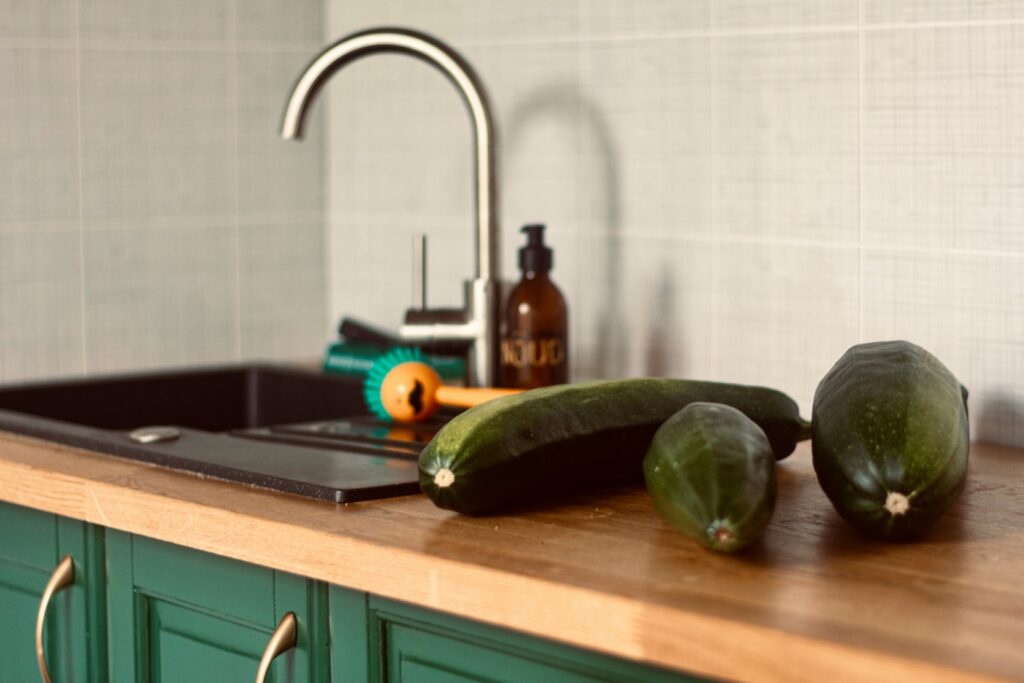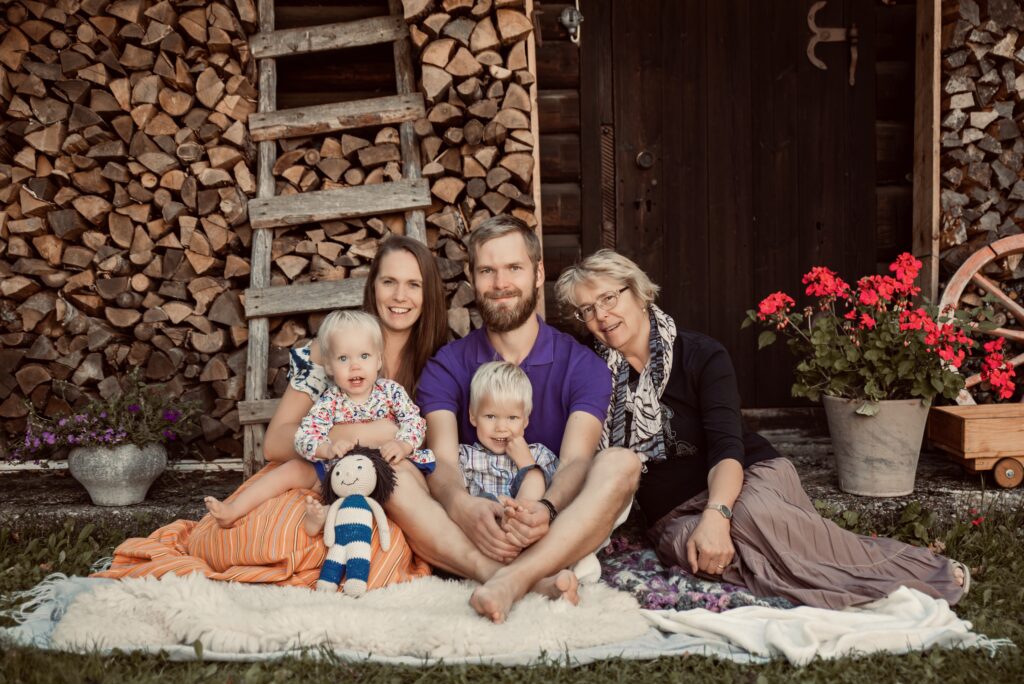Genuinely Old Homestay
We have tried our best to preserve all the buildings and items in our household, which date back to the 20th century, while also adding modern amenities for better stay.

Granary Rooms
The three-room Granary building adapted for summer accommodation dates back to 1915. It was used to store things over winter during the first decades of its life.
In the summer, the girls and servants who worked on the farm slept in the Granary. At that time, work was hard and sleep was all the sweeter. The aura of deep sleep has been preserved even today. A common sight are squinty-eyed vacationers waking up from a deep sleep late in the morning.
The rooms are made unique by the displays on the shelves of various old objects that come from the farm’s history or have migrated here through the owner’s late father, who collected antiques. The rooms still contain large chests from the time of the farm, in which yarn, clothes, fabrics and grain have been stored over time.

SOUTHERN GRANARY ROOM
The grandfather of the current owner of the farm, named Mitrofan, kept bees and used this space to spin honey. However, in the late 1990s, when the then-current mother of the family, Mariina, wanted to run her first homestay, the father was the one who scraped the floor clean of beeswax with a piece of glass and installed the window on the end wall.
There are two oak spring beds in the room, which are bit shorter than today’s beds. These beds were made by the great-great-uncle of the current owner, Vilmar, who was a carpenter graduating from Kuressaare Vocational School in the 1930s. These days there are thick lamb wool mattresses from Sireli Farm for cushioning. Sleeping in such beds is an experience in itself.

CENTRAL GRANARY ROOM
From history, The Central Room was the main area in which the grain was usually stored. There were two grain bins in the northern wall of the room. The last grain bin was demolished just before the opening of the modern homestay. A keen eye may be able to find the location of the tray on the renovated floor. There is still a large old-fashioned chest in the room, in which the family has stored grain over the years and in which various household items are now stored.
Now there is a double bed handcrafted by the owner of the farm. The room, which was previously windowless, was given a brighter look in 2024 when bi-folding windows were added to the west side, which provide a view of the vegetable garden.

NORTHERN GRANARY ROOM
The northern room was originally a meat and fish storage room with a stone floor. Later it was simply used to store utensils. The owner’s parents created a farm museum there during the first homestay in the late 1990s, which was a very popular attraction among visitors.
In 2022, during the renovation work, the lower logs of the barn were replaced and a wooden floor was installed. The room suddenly looked so nice that it was decided to set it up as another accommodation bedroom.
As of today, there are two single beds in the room that have have found their way to us. In 2024, a window was also made in this room, which provide a view of the vegetable garden.

The Grain Dryer & The Farm Suite
The most recent addition to our homestay chapter was born in the summer of 2023, when a nearly original grain dryer from 1928 became the Farm Suite. The room has a pyramid-shaped ceiling and a view of the apple orchard, as well as a 160cm-wide queen size bed for snoozing.
The intact Grain Dryer was the only one in the neighbourhood in its heyday. When visiting you can see the oven in its original condition, which was used to heat the floor of the dryer and the grain stored in it. From the shafts in the wall, the dried grain was dropped directly into the horse cart. The last batch of grain left the dryer at the end of 1990s.
The Farm Museum, which was in the granary before, moved to the front room of the Dryer. For exhibition, we have created a small display of various items that come from the history of the farm or have travelled here through the owner’s late father, who collected antiques. The museum is closed only when there are guests staying in the Farm Suite.

Summer Kitchen
At the beginning of 19th century, the entire building, where the summer kitchen is located, was the family’s shack.
During the Soviet times, cows were kept in the middle part of the building, and the summer kitchen was used as an auxiliary room for the barn. There is still a deep hole under the floor, where the milk buckets were lowered into cold water with a rope.
Before receiving the title of the summer kitchen, the room was called the “hallway of the workshop”, where a kitchenette was set up for guests during the summer accommodation in the 1990s. The kitchen got hot water and modern look in the summer of 2022.

Sauna
Initially, there was no sauna on the farm and people went to another family’s place to wash up. In 1958, a genuine Soviet-style bowl sauna was built, during which time the neighbours also built their saunas. Also at that time, people kept together in many ways. The sauna was heated up in turns by the neighbours, and all three surrounding families could use the sauna in one day.
The good old washing bowl has survived to this day. Nowadays there is a possibility to use the shower as well. There is also a washing machine, dryer and ironing corner in the front room.

Dry Toilets
At some point, we realised that there are as many outlets in our household as there are people living here.
Two modern day Biolan™ compost dry toilets are available for guests to use. The toilet with a view to the field is located by the Granary, and there is one behind the dryer and the sauna.
Using the compost dry toilets is not much different from other dry toilets. After each visit, all you have to do is use the compost pile. Detailed instructions are attached to the walls.

Story of our family
The written history of Palu farm goes back 6 generations and has now reached the hands of the young owner Vilmar.
In the Palu family, which consists of three generations, everyone plays an important role both in everyday life and in homestay. Chickens, a rooster named Madis and the family cats – Rõõzik, Warlike and Barry White – also live on the premises of the farm.
Our goal is to maintain an orderly rustic line where there is room for both people and nature.
We believe in the emergence of beauty from chaos, in constant change and the possibility to stop time. The last one, at least while staying with us.
